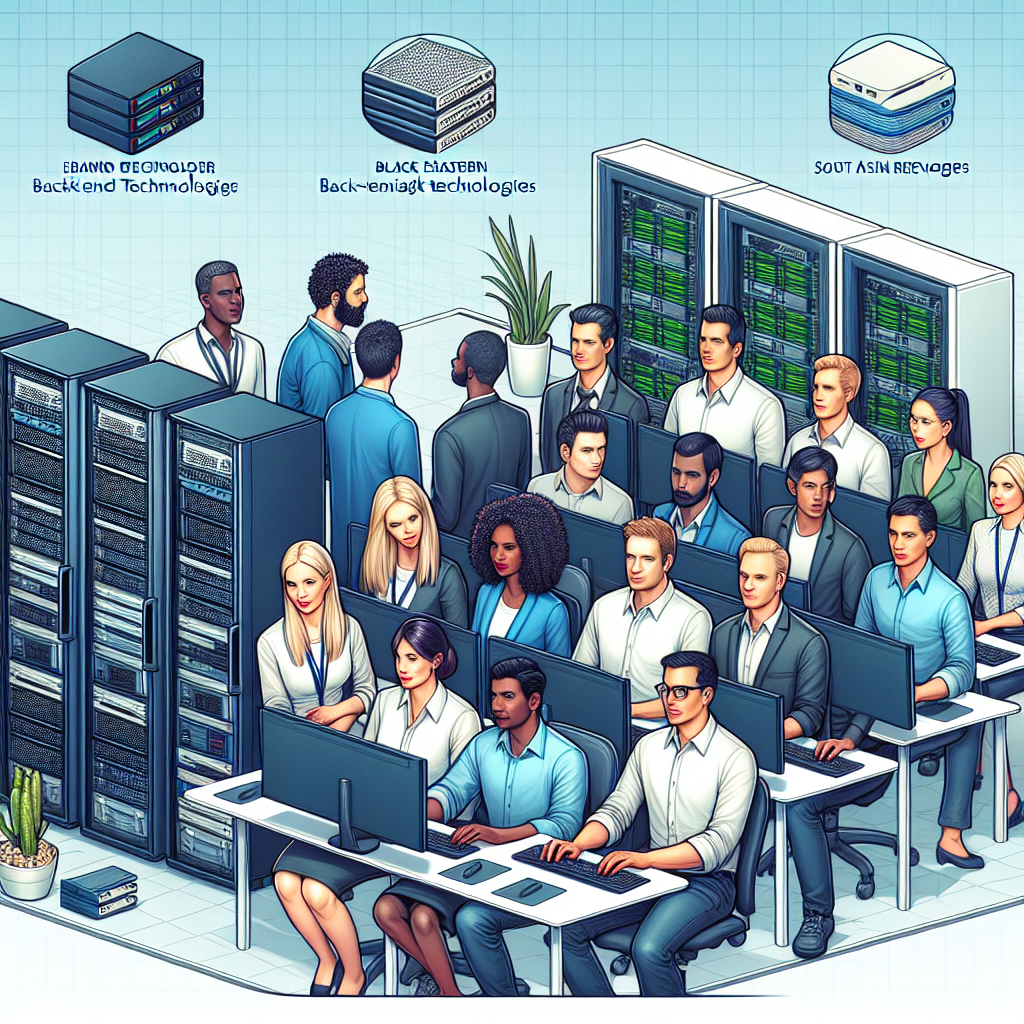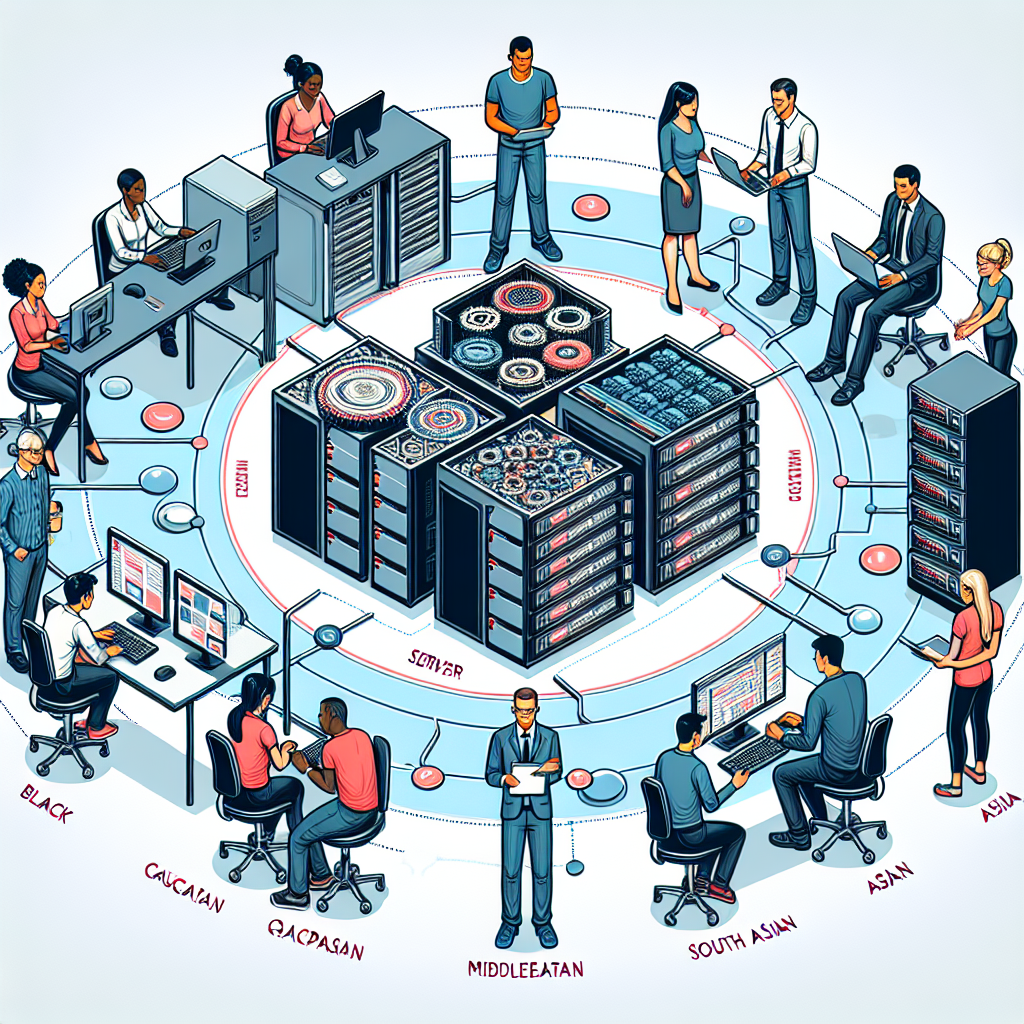Backend Developments for Applications: Understanding Purpose, Components, and Creation

What is the Backend of an Application and Why It Matters for Your Business?

Imagine you’re driving a car. As you twist the steering wheel, adjust the seat, and hit the pedals, what you can’t see is the engine humming beneath the hood, powering your every move. In the world of software applications, the backend is that engine. Understanding what the backend of an application is and why it’s crucial for your business can set you apart in today’s digital landscape.
The backend encompasses everything that happens behind the scenes of an application. This includes the server, the database, and the application itself. It’s responsible for processing user requests, managing data, and serving information to the frontend (what you see). Think of it as the backbone of your application that ensures everything runs smoothly.
Why Should You Care About Backend Development?
Having a robust backend is not just an option; its a necessity. Here’s why:
- ⭐ Performance: A well-structured backend can dramatically enhance the speed and efficiency of your application. Did you know that 47% of users expect a web page to load in two seconds or less? ⏰
- ⭐ Security: The backend is responsible for safeguarding sensitive user data. A secure backend can prevent breaches, ensuring customer trust.
- ⭐ Scalability: As your business grows, your application must handle increased traffic. A strong backend facilitates this growth seamlessly.
What is Considered the Backend?
The components of backend development typically include:
- ⭐ Server: The machine that hosts your application and runs the backend processes.
- ⭐️ Database: Where your applications data is stored, retrieved, and manipulated.
- ⭐️ Application Programming Interface (API): The intermediary that allows the frontend and backend to communicate.
- ⚙️ Server-side languages: Languages like Python, Ruby, or PHP that execute the application’s logic.
If you are still wondering, what is the purpose of the backend? It’s to ensure data handling, business logic, and user management are smooth, scalable, and secure. But do you need a backend? The short answer is: YES! Most applications require a backend to function effectively.
Do All Applications Have a Backend?
Common misconceptions exist here. Not every application requires a robust backend. For example, static websites can function without one because they serve pre-built pages directly. However, if your application processes transactions, interacts with databases, or handles real-time data, it definitely needs a quality backend. Can you imagine a busy e-commerce platform like Amazon operating without a backend? It simply wouldn’t work!
Real Client Scenarios
Let’s share a few stories to illustrate this:
⭐ Case Study 1: A local coffee shop wanted to develop an app for ordering ahead. Initially, they settled for a simple static site, leading to numerous customer complaints about ordering errors and slow service. By redesigning the app with a comprehensive backend, they now handle orders efficiently, boost sales by 30%, and have turned complaints into compliments!
⭐ Case Study 2: A startup in the e-health sector launched without a structured backend. Their user data was not well-protected, leading to a significant breach that put their reputation on the line. Post-implementation of a secure backend, they re-established trust with their customers and complied with regulations, driving user growth back to 40% and maintaining security.
Expert Insights
Experts suggest regularly updating software and ensuring security systems are configured correctly to keep your backend safe and efficient. A modern backend should support scalability and adapt to changing business needs, just like a flexible employee who can take on new tasks as they arise. Regular monitoring can prevent disasters before they happen.
Are you still unsure about your backend? Reach out to us at Artivale! With over 20 years of experience, our professional specialists can help you create a backend for your application that meets all your business needs. Our services are designed to provide everything you require under one roof. From development to technical support, theres no need for you to deal with multiple vendors anymore. Feel free to call us at [email protected] or visit artivale.com to learn more about how we can help!
What is Considered the Backend? Exploring the Components and Functions

Lets dive deeper into the world of the backend—the unsung hero of applications that often operates largely out of sight. If youre wondering, what is considered the backend? It’s a combination of various components that work together to manage tasks, data, and services like a tightly-knit orchestra, creating a symphony of user experiences on the frontend. Let’s explore these essential elements and their functions in detail.
Key Components of the Backend
The backend of an application is made up of various elements that can be understood better through the following components:
- ⭐️ Server: The server is a dedicated machine that processes requests from users. It runs the application’s code and manages data exchanges. Whether it’s a cloud server or an on-premises server, this is where the magic begins.
- ⭐️ Database: Imagine a library, but for your data. Databases store, retrieve, and manage information critical to your application. They can be relational (like MySQL) or non-relational (like MongoDB), depending on your needs.
- ⚙️ Application Programming Interface (API): APIs act as communication bridges between your frontend and backend. They enable different software applications to talk to each other. For instance, a restaurant app uses an API to show updated menus by fetching data from the backend.
- ⭐ Business Logic: This is where all the decision-making happens. Business logic dictates how data is created, stored, and modified based on user interactions. For example, when you add an item to your cart on an e-commerce site, that action triggers backend business logic.
Functions of the Backend
The backend serves several essential functions that keep your application running smoothly. Here are the key functionalities:
- ⭐ Data Processing: Backends handle the processing of user requests. Whether a user is retrieving or entering data, the backend processes this information seamlessly, allowing for immediate feedback.
- ⭐ Data Storage: Data needs a home! The backend ensures all user data, application logs, and other information are securely stored and easily retrievable when needed.
- ⭐ Security: The backend implements authentication and authorization measures to protect sensitive information. For example, strong password protocols and encrypted data storage allow safe transactions.
- ⭐ Integration: Many applications rely on third-party services, be it payment processors or email marketing tools. Backends facilitate this integration through APIs, allowing seamless connection between services.
How These Components Work Together
Picture a restaurant where the backend components are part of the kitchen staff. The server is the head chef, orchestrating the entire operation. The database is the pantry, stocked with all your ingredients (data). The APIs are like the waitstaff, taking orders from diners (users) and communicating them to the kitchen. Business logic is the recipe that dictates how ingredients are combined to deliver a delicious meal (user experience).
Real Life Example
Let’s illustrate this with a quick example. Consider an online bookstore. When a customer searches for a book:
- ⭐ The request goes to the server, which processes it.
- ⭐️ It accesses the database to find book details.
- ⭐ An API sends the data back to the frontend for display.
- ⭐ In the background, business logic checks if the book is in stock before confirming the availability to the user.
This seamless interaction among backend components is what ensures a smooth user experience. Users can browse, select, and purchase books without a hitch, thanks to a solid backend infrastructure.
Need Help with Your Backend?
Understanding your backend is just the beginning. If you’re looking to create a backend for your application or want to improve your existing one, Artivale is here to help! With over 20 years of experience in the IT field, our team of professional specialists can guide you in developing a robust backend solution that meets your needs. Contact us at [email protected] or visit artivale.com to learn more about how we can support your project!
Do All Applications Have a Backend? Debunking Common Myths and Misconceptions

As we navigate the digital landscape, you might find yourself asking, do all applications have a backend? The answer might surprise you. While many applications indeed rely on a robust backend to function effectively, not every app requires one. Let’s dive in and debunk some common myths and misconceptions surrounding this topic.
Myth #1: Every Application Needs a Complex Backend
It’s a common misconception that all applications require a complicated and fully developed backend. In reality, many simple applications can function without intricate backend systems. For instance, static websites—like personal blogs or portfolio sites—serve content directly from HTML files without any need for dynamic data storage or processing. They can run perfectly well without the heavy lifting an advanced backend provides.
Myth #2: Mobile Apps Always Have a Backend
Another widespread belief is that mobile applications must always have a backend. This notion fails to recognize that some mobile apps, especially those offering single-player experiences or basic functionalities (like a calculator or a note-taking app), can operate entirely on the device without any connection to a backend server. These applications leverage local storage for data management, making them independent of external servers.
Myth #3: Backends are Only for E-Commerce and Complex Apps
While it’s true that e-commerce platforms and feature-rich applications often require strong backend support, countless simpler applications benefit from backends as well. For instance, a weather app needs to retrieve constant updates from a database to provide real-time forecasts. Similarly, social media applications thrive on backend infrastructures to handle user data, likes, and comments, ensuring a cohesive user experience. Not all apps are created equal, but many can leverage a backend to enhance their functionality.
Myth #4: If There’s No Visible Backend, it Doesn’t Exist
Just because you can’t see the backend doesn’t mean it isn’t there! Think of it as the foundation of a house. A sturdy foundation supports all that you see above, but it remains hidden from view. Likewise, apps with robust backends may operate invisibly, managing data and processes seamlessly. Users might interact with a clean, sleek interface while complex backend logic drives the application behind the curtain.
Common Scenarios Where Backends Shine
While it’s easy to highlight exceptions, let’s look at common scenarios where having a backend is vital:
- ⭐ Data Management: Applications that require users to store, retrieve, and manipulate information—like cloud storage services or collaborative document editors—benefit immensely from a strong backend.
- ⭐ Real-time Data Sync: Apps where multiple users need access to the same data simultaneously, like real-time chat or collaboration platforms, rely on backends to keep everything in sync.
- ⭐ Payment Processing: Ecommerce sites and apps that facilitate financial transactions must have secure backends to handle user information, payment details, and order processing.
Why Understanding Your Application’s Needs is Crucial
Understanding what type of application you’re building helps clarify whether a backend is necessary. For instance, if your goal is to create a straightforward informational site, a simpler solution could work just fine. However, if your ambitions include building a complex platform that handles user accounts and transactions, investing in a robust backend is non-negotiable.
Is Your Application Ready for a Backend?
Wondering whether you need to create a backend for your application? If your application involves data management, user interactions, or requires dynamic content updates, then yes, it’s likely essential. At Artivale, we specialize in developing tailored backend solutions that cater to your specific application needs.
With over 20 years of experience, our professional specialists can help ensure your application functions flawlessly, regardless of its complexity. Give us a call at [email protected] or visit artivale.com to discuss how our services can empower your digital project!
Submit your details in the form and our team will personally get in touch with you within the next business day to discuss your needs
